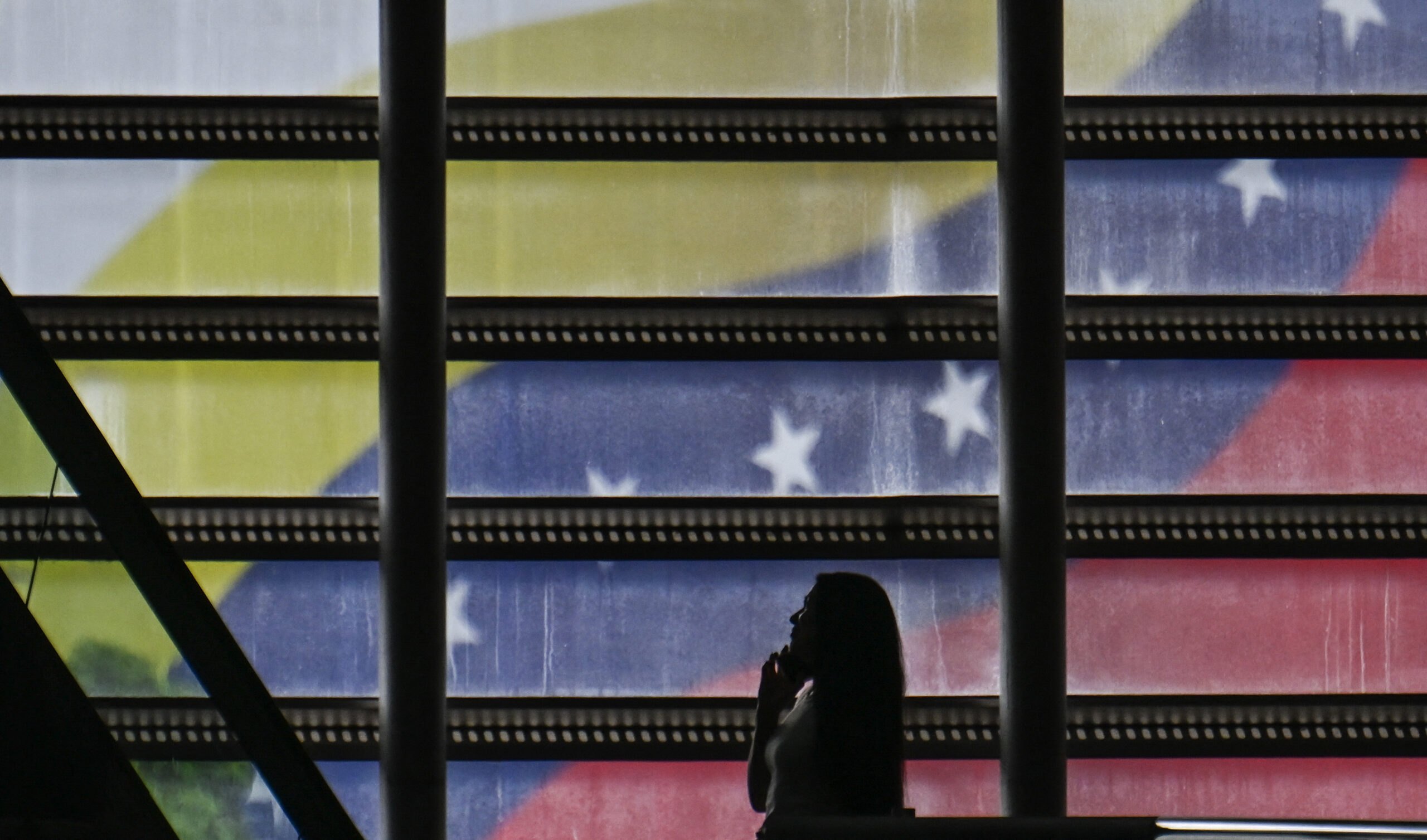Mexico Update: July Elections Evaluate Political Course
Mexico Update: July Elections Evaluate Political Course
Nearly half of Mexico’s states head to the ballot box on July 4, with voters picking new governors in 12 out of the 14 elections. AS/COA explores the races, the assassination of a gubernatorial candidate, and the resurgence of the Institutional Revolutionary Party.
| On June 28, gumnen assassinated Rodolfo Torre Cantú, the PRI candidate and frontrunner in the race for governor of Tamaulipas. Learn more about the status of the Tamaulipas elections below. |
Updated June 30 - Nearly half of Mexico’s states hold elections on July 4 and the results could shape the 2012 presidential race. Twelve of the 14 elections involve gubernatorial races. With Mexico’s powerful governors restricted to serve one six-year term each, the elections will lead to significant transitions in a large portion of the country’s federation, which is made up of 31 states and one federal district.
This update will analyze the consequences of the next state elections in Mexico, focusing on the role of the governors and how they could influence a possible return of the Institutional Revolutionary Party (PRI) to the executive branch come 2012. The states holding elections July 4 are: Aguascalientes, Baja California, Chiapas, Chihuahua, Durango, Hidalgo, Oaxaca, Puebla, Quintana Roo, Sinaloa, Tamaulipas, Tlaxcala, Veracruz, and Zacatecas.
The political power of governors in Mexico
Governors were described as the “new viceroys” of the Mexican political system by political analyst Leo Zuckermann of Mexico’s Centro de Investigación y Docencia Económicas. In a 2003 essay, he argued that they enjoy increasing autonomy due to access to the public funds that have been decentralized and channeled to their states. Moreover, they play an important role in shoring up support for their political parties, both in terms of successors and elections of other officials.
This idea is demonstrated in the upcoming elections, in which 42 million people—or a third of Mexican voters—are registered to participate. Of the 12 states that will elect a new governor, nine are currently governed by the PRI. Polls for the July 4 vote show the PRI gubernatorial candidates with an advantage in all of those states. In eight of those states, the PRI candidates carry a large advantage. Oaxaca stands as an exception, with polls showing a tight close race.
In the remaining states—Aguascalientes, Tlaxcala, and Zacatecas—the first two are currently governed by the conservative National Action (PAN) while the third is under the leadership of the left-leaning Party of the Democratic Revolution (PRD). Polls indicate that only Tlaxcala might remain in the PAN’s hands, with a mere 26.3 percent vote preference and slight majority over the PRI. In Aguascalientes and Zacatecas, the PRI has a distinct advantage over the other two parties, with their candidate running, respectively, a 14 percent and 22 percent advantage.
To sum up, polls indicate the PRI could win all 12 of the governorships up for grabs come July 4, paving the way for the party to increase its support base. The PRI already governs 75 percent of the Mexican population. This is on top of PRI’s mid-term election gains last year, when the party captured 37 percent of the votes and won enough seats in Mexico’s lower congressional house to become the party with the largest representation there. In an attempt to slow the PRI’s momentum, the right-leaning PAN and the left-leaning PRD formed unlikely political alliances in six out of the 14 states holding elections.
The unexpected PAN-PRD alliance
Even though alliances between opposite sides of the political spectrum are not new, the results of the last presidential election in Mexico made the notion seem highly improbable. Three years ago, after current President Felipe Calderón of the PAN won a tight race over the PRD’s Andrés Manuel López Obrador, the PRD cried foul and questioned the legitimacy of the results. Today, the parties are allied in six states—Chiapas, Durango, Hidalgo, Oaxaca, Puebla, and Sinaloa.
Of those six, only Chiapas is not electing a governor and will hold elections for the state’s congress. In the states electing governors, Oaxaca stands as the one state where the alliance candidate made gains on the PRI frontrunner, with only 4 percent points separating them. In the remaining four states, Durango, Hidalgo, Puebla, and Sinaloa the PRI has an advantage over the alliance candidate of at least 9 percent.
The alliance between PAN and PRD did little to shake the confidence of the PRI. The party’s leader, Beatriz Paredes, pointed out that the alliances lack “ideological affinity” and “they have nothing on [the PRI]” when it comes to the July 4 races.
Races to watch
Ciudad Juarez: In this mayoral race, the winning candidate faces the challenge of governing the country’s most violence city. The frontrunner and PRI candidate Héctor Murguía seeks a second term, having served from 2004 to 2007. Murguía plans to support efforts for regaining control of the city by increasing the tax base. Although 29 percent of voters remain undecided in this election, Murguía polls ahead of his main rival, the PAN’s César Jáuregui Moreno, by 24 percent.
Oaxaca: The PRI has never lost a gubernatorial race in this state. If the PAN-PRD alliance wins the upcoming election it would be a major success for the alliance and could foster similar coalitions in other states and perhaps for 2012. Current Governor Ulises Ruíz and PRI’s candidate Eviel Pérez have been accused by PRD national leader Jesús Ortega, of creating an atmosphere of fear to discourage voting on election day and warns against electoral fraud. As of the end of May, the PAN-PRD alliance candidate Gabino Cué polled with 32.2 percent of the votes, compared to 36.8 percent for Pérez.
Quintana Roo: The PRD candidate Gregorio Sánchez was arrested for organized crime links and his campaign manager Gerardo Mora has taken his place as candidate. Until June, Sánchez had 17.2 percent of the vote. It remains unclear whether votes for Sánchez will go to Mora. PRI candidate Roberto Borge polls with 51.5 percent of the vote followed by 18.1 percent for the PAN’s Alicia Rical, who was chosen after the PAN and PRD reached an impasse on creating an alliance as in other states.
Tamaulipas: The election in this border state took center stage after the frontrunner, PRI candidate Rodolfo Torre Cantú, and four members of his campaign were assassinated on June 28 in an ambush linked to organized crime. In spite of the brutal attack, the state’s electoral body chose to proceed with elections on July 4; Torre’s name will still appear on the ballots. In view of this decision by the electoral authority, PRI leaders appointed Torre’s substituted the slain candidate with his brother, Egidio Torre Cantú, who served as a substitute mayor of Tamaulipas' capital Ciudad Victoria from 2000 to 2001. It remains to be seen if voters in that state, one of the most violent in Mexico, will head to the polls in significant numbers. Also, it’s unclear whether they will cast their votes for the PRI, which held a notable advantage over second-place PAN candidate José Julián Sacramento prior to the June 24 assassination. The other candidates competing for governor are Julio César Almanza Armas for the PRD, Armando Vera García for the Labor Party (PT), and Alfonso De León Perales for Convergencia.
Tlaxcala: In polls taken a few days before the elections, the PRI held a small advantage over the PAN candidate ranging from 2.5 to 5.8 points. If the PAN wins this tight race (it polls with 26.3 percent against the PRI’s 25.6, as of the end of May), the candidate, Adriana Dávila, would be one of just two female governors in the country along with Ivonne Ortega of Yucatan. The choice of PRD candidate Minerva Hernández, who polls with 12 percent, came amid acrimonious discussions between López Obrador supporters and other PRD supporters who have chosen to disassociate from the López Obrador movement and had hoped to create a PAN alliance. The PRI’s candidate, Mariano González, is running for the second time after losing in 2004. It is noteworthy that, in the 12 gubernatorial races, the PRI does not have any female candidates, the PAN has two, the PRD has two, and the PAN-PRD alliance has one.
The 2012 presidential race: The return of the PRI?
If the elections for a new president took place as of May 2010, polls show that 40 percent of voters would choose Enrique Peña Nieto, the PRI’s best-known politician and potential candidate. That places him 26 percent ahead of the next closest candidates. Another poll taken last month found that 49 percent of respondents believe the PRI represents the best interests of the country. A February poll looking ahead to the 2012 race shows the PRI with a support base of 39 percent, compared to 17 percent for the governing PAN and 9 percent for the PRD. But 30 percent of those polled do not have any preference, signaling a possible loss of faith in the country’s main parties. A Latinobarómetro survey from December last year found that Mexico is the country that witnessed the greatest decline in support for democracy, which ran at 42 percent in 2009 compared to a 51 percent average between 1995 and 2009.
The PRI’s recovery builds not only on the strength of governors and mid-term victories, but also stumbles made by the PAN and the PRD since the PRI lost it’s seven-decade-long hold on the executive branch during the presidential election of 2000. The PAN is seen as falling short on delivering the 7 percent growth rate once promised by ex-President Vicente Fox. A major economic crisis—sparked in large part by the U.S. recession—coupled with rising concern over bloodshed caused by the drug war have delivered additional blows to the PAN’s support.
The PRD, meanwhile, faces division and internal squabbling between those who supported Lopez Obrador’s protests against the 2006 election results and others who sought new leadership. These quarrels have discredited the PRD and led to a loss of faith among supporters, exhibited in last year’s mid-term election results.
Such missteps have been to the PRIs gain. Yet some critics raise concerns that the PRI would return to power without sufficient reform to overcome the corruption that dogged the party in the past. As public policy professor and commentator Sabino Bastidas wrote in El País, the PRI “lacks a modern and democratic structure,” adding that, “It is an ambiguous party in a country that can no longer have ambiguity.”








